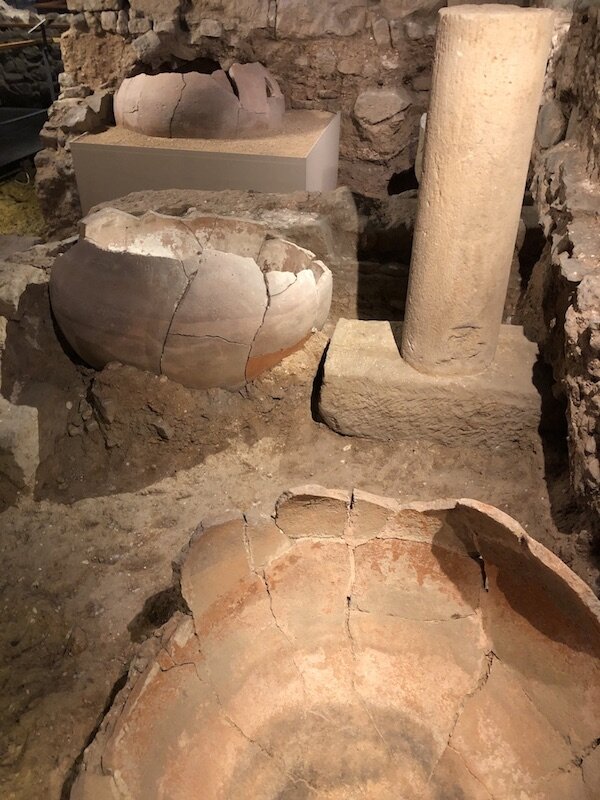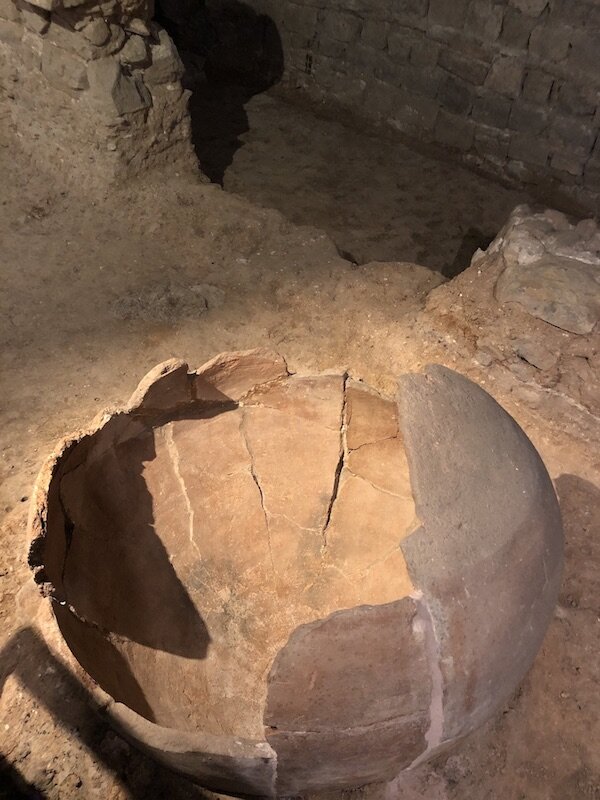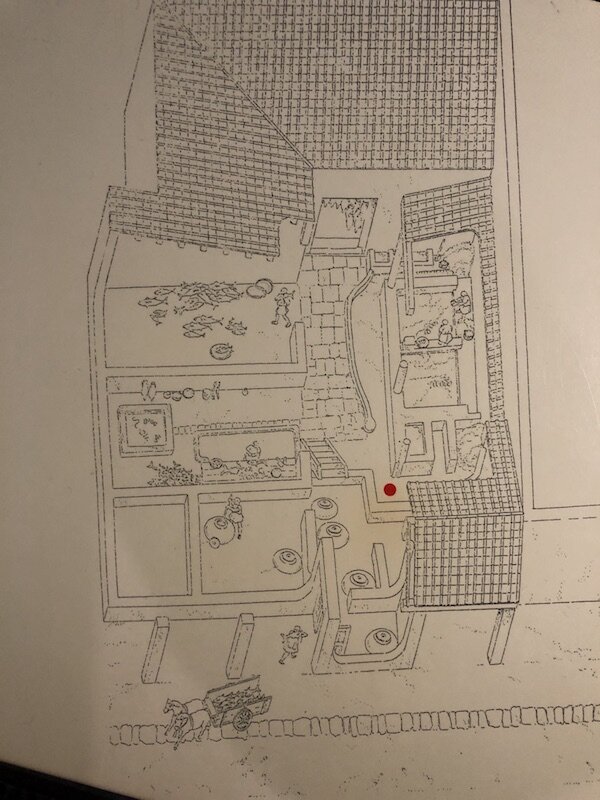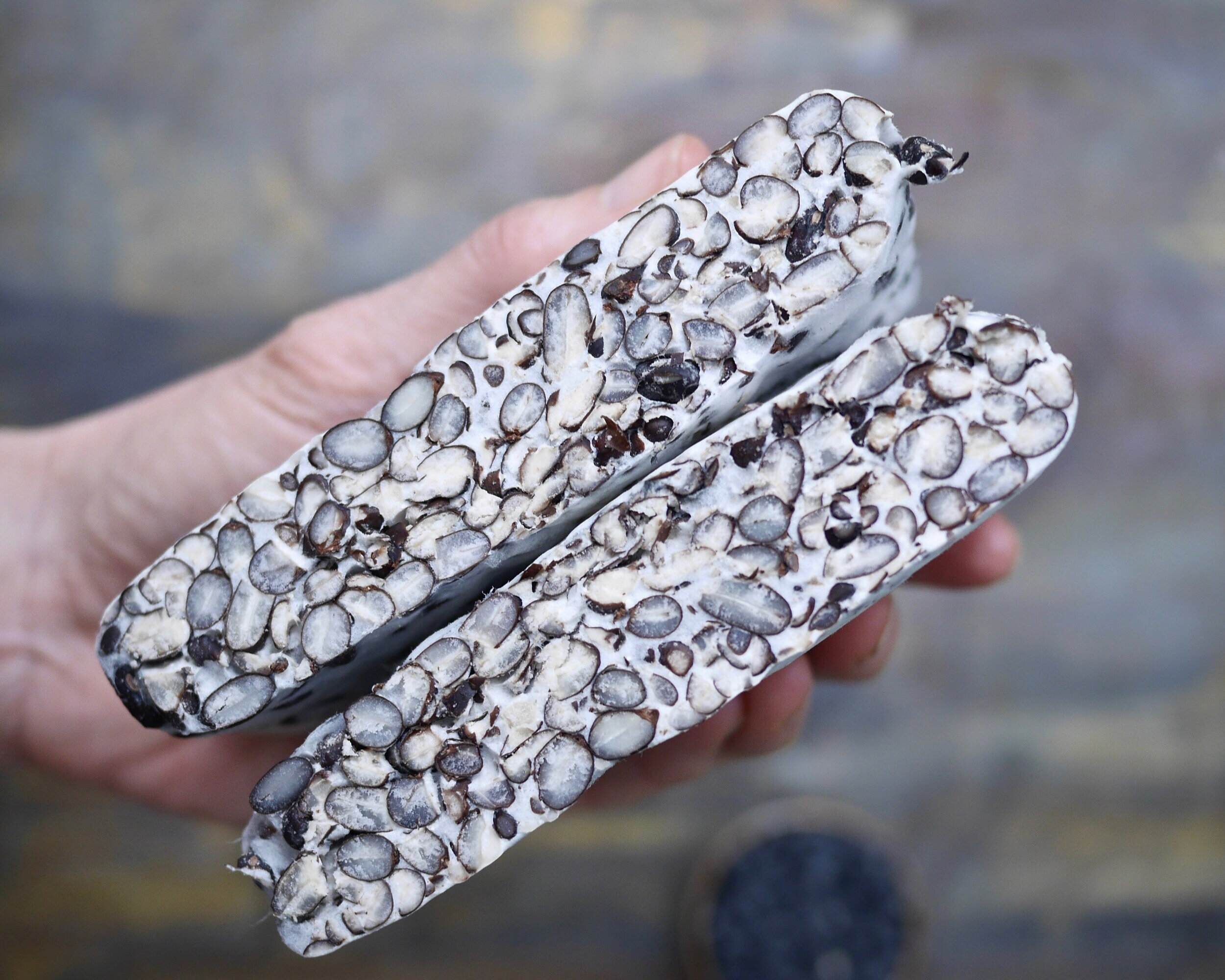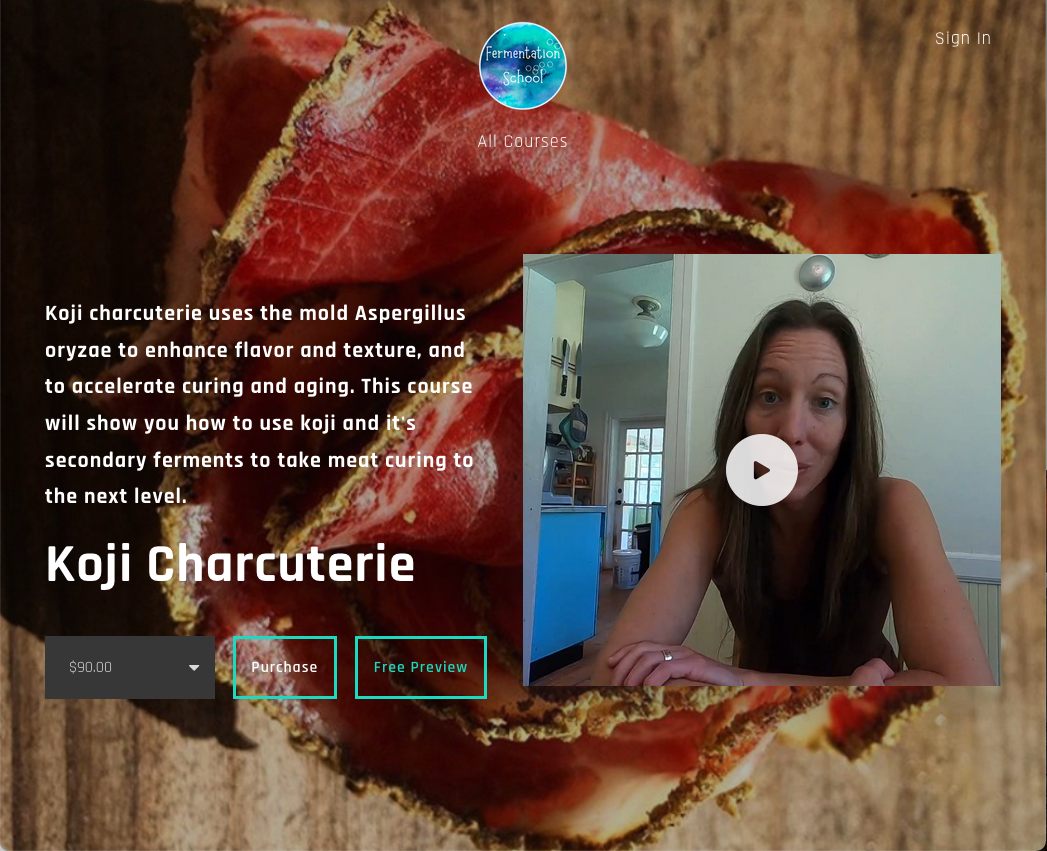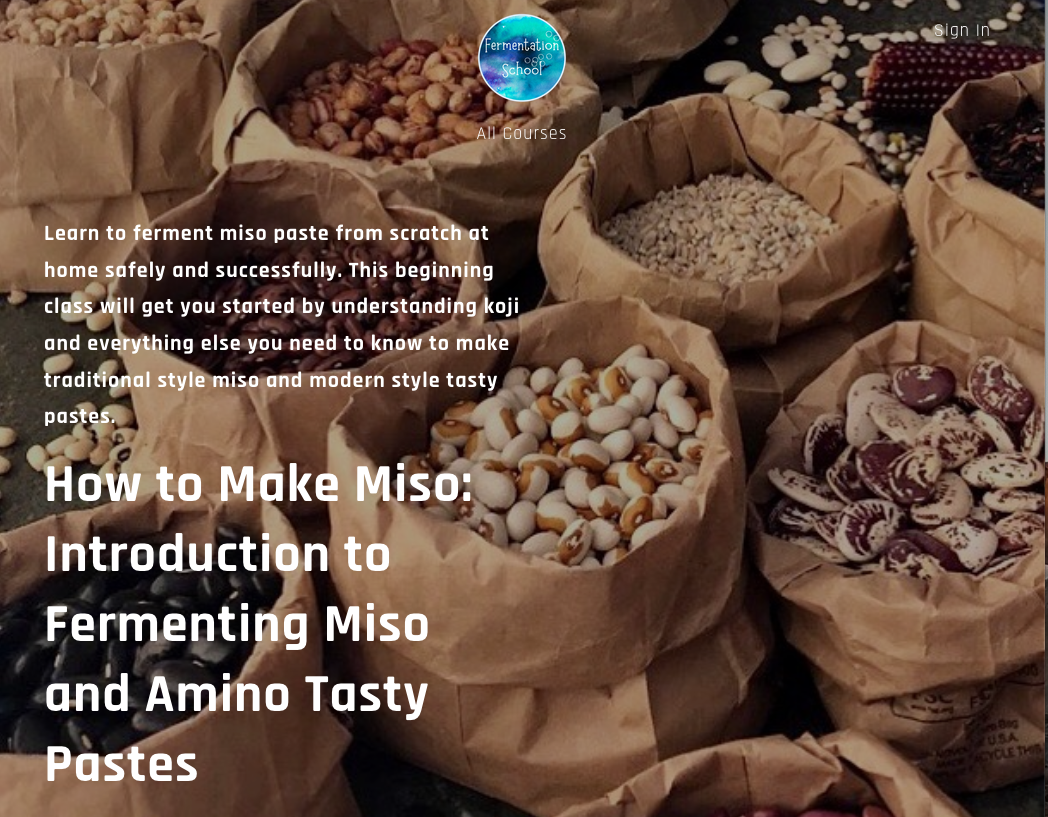Fermented Apple Butter — intriguing isn’t it?
Before I fermented everything, I canned everything. If my memory is correct, my first foray into preservation was strawberry jam followed by apple butter that fall. I always loved apple butter and found the stuff in the store way too sweet, when I could find it.
We grew up eating a lot apple butter during the part of my childhood that we lived near the Cornell Apple Orchards in Ithaca, NY. For me apple butter is all autumn and comfort. We ate it over thickly lathered cream cheese on toast. Yet strangely it also reminds me of my grandmother who associated apple butter with the unpleasant memory time in foster care. She’d been orphaned at 11 and at one home she was fed apple butter on rye bread daily. No butter, no cream cheese.
Now I only can a few things and apple butter is one of them. Yet I have never fermented apple butter. I grow the apples, press the sweet cider, use homemade vinegar and simmer it for hours in my copper jam pot. This year my six-year-old grandson joined me and spent an hour running the steamy cooked apples through the food mill for me. He is fascinated by process and the tools needed so the food mill he had never seen before was the best way to spend the waning hours of the day—turning the crank and talking about it the whole time.
After making my apple butter for the year, I read Preserved: Fruit and became intrigued by the recipe the authors and publisher have shared. Next time…
Preserved: Fruit is the second volume in a new series of six books that are all about preservation. The series is written by Darra Goldstein, Cortney Burns, and Richard Martin. It came out simultaneously with Preserved: Condiments volume one in the series.
I am in love with the first two books. These books share well-researched methods to preserve abundance in delightful ways. The books are a feast in more ways than one—the recipes begin with rich headnotes that give the reader historical and cultural context to the preserved food. I had the opportunity to interview the authors on my Substack Ferment Nerds. Follow this link to read the interview and for recipes for Black Salt and Fermented Honey Charoset
Volume 1 and 2 of Preserved series written by Darra Goldstein, Cortney Burns, and Richard Martin.
Sweet-Tart Apple Butter
Makes 1 Quart or 1 Liter
Excerpted with permission from Preserved: Fruit by Darra Goldstein, Cortney Burns, and Richard Martin published by Hardie Grant Publishing, October 2023
Apple butter has an intriguing history. It is thought to date back centuries to orchard rich monasteries and villages in Belgium and Germany. The practice made its way across the Atlantic with European immigrants, especially German-speaking groups who formed the Pennsylvania Dutch communities. Apple butter later spread throughout Appalachia and the American South. Families regularly turned the production of apple butter into a communal event, producing huge batches of it in large copper kettles. One of America’s most well-known brands got its start this way, when a pioneer named Jerome Monroe Smucker purchased an Ohio apple mill in 1897 and began making apple butter over a wood stove. He and his wife ladled the apple butter into crocks to extend the sale of apples year-round, and their apple butter became the foundation for what is now Smucker’s jams. While apple butter isn’t as popular today as it once was, we think that our recipe will earn a special place in your larder. Lady apples are first preserved in a brine of sugar, water, vinegar, and spices that adds a depth of flavor to the finished purée, which includes fresh apples. This smooth, tangy spread is irresistible.
Photograph credit: David Malosh
INGREDIENTS:
2 pounds / 900 g small apples, such as Lady apples
2 1/4 cups / 400 g sucanat
2 cups / 475 ml water
2 cups / 475 ml unseasoned rice vinegar
2 cups / 475 ml white wine vinegar
1 cinnamon stick
3 cloves
10 black peppercorns
1 bay leaf
1 1/2 pounds / 680 g fresh tart apples, such as Pink Lady, Honeycrisp, or Cortland Poke each small apple a few times with a skewer or push pin. Place the apples in a 3-quart /3 L crock or jar.
PREPARATION:
In a medium saucepan, bring the sucanat, water, rice vinegar, wine vinegar, cinnamon, cloves, peppercorns, and bay leaf to a boil. Pour the hot brine over the apples and cover the container. Leave them to sit for 1 month in a cool, dark place.
To make the apple butter, drain the pickled apples, reserving the brine. Cut the pickled apples into 1-inch / 2.5 cm slices and place them in a Dutch oven or other large, heavy pot.
Cut the fresh apples into 1-inch / 2.5 cm slices and add them to the pot. Pour in enough of the pickling brine to come halfway up the apples (you will use about half of the reserved brine); discard the rest of the brine.
Cover the apples and brine with a circle of parchment paper (a cartouche) and bring to a boil over medium heat. Cook at a rapid simmer, stirring frequently once the apples begin to soften. Continue cooking until the apples are falling apart and only a shallow layer of liquid remains on the bottom of the pan, about 45 minutes.
Scrape the mixture in batches into a food mill and pass it through the mill to make a very thick, smooth puree. Pack the hot apple butter into small jars, cap them tightly, and refrigerate for up to 4 months. For even longer keeping, see Notes on Canning (in the book).
SERVING SUGGESTIONS:
FILL THUMBPRINT OR OTHER COOKIES / SPREAD ON BUTTERMILK BISCUITS AND TOP WITH BACON / USE AS A FILLING IN LAYER CAKE WITH MAPLE BUTTERCREAM /ENJOY WITH CHARCUTERIE AND CHEESE












